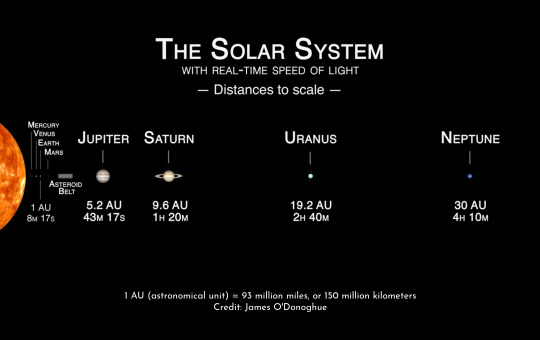#solar powering machine
Photo

The Ultimate Guide To Building A Solar-Powered Home
Building a solar-powered home is easier than it sounds—various resources are available that make things straightforward to understand. From materials and tools to diagrams and step-by-step instructions, this guide will walk you through everything you need to create an energy-efficient dwelling from start to finish.
#solar#panels#energy#home#electricity#solar panels#solar energy#solarpanelinstallation#renewableenergy#solar panel system#solar technology#solar powering machine#solarradiation#solar power system#rooflayout#rooftop systems#residentialrooftops#solarpoweredhome
3 notes
·
View notes
Text
All my favs most recent albums

#taylor swift#the tortured poets department#florence and the machine#dance fever#lady gaga#chromatica#lana del rey#did you know there’s a tunnel under ocean blvd#ariana grande#eternal sunshine#lorde#solar power#melanie martinez#portals#dua lipa#radical optimism#billie eilish#happier than ever#phoebe bridgers#punisher#boygenius#the rest#gracie abrams#good riddance#olivia rodrigo#guts
8 notes
·
View notes
Text







Solar power - Lorde // Jodie Comer - Killing Eve // Choreomania - Florence and the Machine // Wounds of Christ - Assorted Medieval Prayer Books // Woman - Doja Cat // Christa - Edwina Sandys
#Lorde#solar power#jodie comer#killing eve#Fatm#florence and the machine#choreomania#dance fever#medieval art#jesus christ#christianity#doja cat#Woman#Edwina Sandys#web weaving#divine feminine#roe vs. wade
132 notes
·
View notes
Text


choreomania - florence + the machine // solar power - lorde
#listen i know this is a stretch but the jesus imagery got to me#florence and the machine#lorde#choreomania#solar power#dance fever#parallels
119 notes
·
View notes
Text
I guess my favorite type of music really is just Jack Antonoff producing while white girls sing about the female experience
#taylor swift reputation#taylor swift folklore#Taylor swift evermore#jack antonoff#lorde melodrama#lorde solar power#taylor swift 1989#Florence and the machine dance fever#dance fever
16 notes
·
View notes
Text
Revolutionizing the Energy Sector: Artificial Intelligence and Machine Learning by TwoKnct Media & Publishing Ltd

The energy sector stands on the cusp of transformation, driven by technological advancements in artificial intelligence (AI) and machine learning (ML). These disruptive technologies are revolutionizing how energy is produced, distributed, and consumed, ushering in an era of greater efficiency, sustainability, and reliability. From optimizing renewable energy sources to enhancing grid management and predictive maintenance, AI and ML are reshaping the energy landscape.
Optimizing Renewable Energy Sources: Renewable energy sources like solar and wind power are becoming increasingly prevalent in the global energy mix. However, their intermittent nature poses challenges for grid stability and energy management. AI and ML algorithms offer solutions by predicting renewable energy generation patterns, optimizing power output, and integrating renewable sources seamlessly into existing grids.
ML algorithms analyze historical data, weather patterns, and other variables to forecast renewable energy generation with remarkable accuracy. These forecasts enable grid operators to anticipate fluctuations in supply and demand, facilitating better resource allocation and grid balancing. Moreover, AI-driven optimization algorithms can dynamically adjust parameters such as turbine angles or solar panel orientations to maximize energy yield based on real-time conditions.
Enhancing Grid Management: Maintaining a stable and resilient energy grid is crucial for ensuring uninterrupted power supply to consumers. AI and ML play a vital role in enhancing grid management by offering predictive analytics, real-time monitoring, and intelligent automation.
Predictive analytics algorithms leverage historical data and machine learning models to identify potential grid failures or bottlenecks before they occur. By analyzing data from sensors, smart meters, and IoT devices, these algorithms can anticipate equipment failures, predict demand patterns, and optimize energy distribution routes. This proactive approach minimizes downtime, reduces maintenance costs, and enhances overall grid reliability.
Real-time monitoring systems equipped with AI algorithms continuously analyze grid data to detect anomalies, identify inefficiencies, and optimize energy flow in response to changing conditions. These systems enable grid operators to make informed decisions swiftly, mitigating risks and improving grid performance.
Intelligent automation powered by AI algorithms streamlines grid operations by autonomously adjusting energy flows, rerouting power, and optimizing load distribution. By incorporating advanced control systems and decision-making algorithms, energy grids can operate more efficiently, adapt to fluctuations in supply and demand, and integrate renewable energy sources seamlessly.
Predictive Maintenance: Maintaining energy infrastructure is essential for ensuring safety, reliability, and longevity. Traditional maintenance practices often rely on scheduled inspections or reactive repairs, leading to inefficiencies and downtime. AI and ML-based predictive maintenance techniques offer a proactive approach by analyzing sensor data, equipment performance metrics, and historical maintenance records to forecast equipment failures and prioritize maintenance activities.
Machine learning algorithms trained on vast amounts of sensor data can identify patterns indicative of impending equipment failures, such as abnormal vibrations, temperature variations, or voltage fluctuations. By continuously monitoring equipment health in real-time, these algorithms can predict potential failures with high accuracy, allowing operators to intervene preemptively and schedule maintenance activities during planned downtime.
Furthermore, AI-driven predictive maintenance systems optimize maintenance schedules, spare parts inventory, and resource allocation, reducing operational costs and minimizing downtime. By prioritizing critical maintenance tasks based on risk assessments and performance analytics, energy companies can enhance asset reliability, extend equipment lifespan, and improve overall operational efficiency.
Conclusion: Artificial intelligence and machine learning technologies are reshaping the energy sector, driving innovation, and unlocking new opportunities for efficiency, sustainability, and resilience. From optimizing renewable energy sources to enhancing grid management and predictive maintenance, AI and ML are enabling energy companies to overcome challenges, improve operational performance, and deliver reliable, affordable, and sustainable energy solutions for the future. Embracing these transformative technologies is essential for staying competitive in an increasingly dynamic and interconnected energy landscape.
#artificial intelligence#renewableenergy#solar energy#power distribution#machine learning#conference#ai#valencia#oilandgas#energy#visit
0 notes
Text
I think the reason conservatives hate environmentalism so much is that all the terminology is too friendly and lame sounding to take seriously. I purpose we change the following terms to get these people on our side.
Solar powered -> Plasma charged
Wind power -> Vortex energy
Electric vehicle -> Lightning machine
Renewable resource -> Infinity asset
Greenhouse gasses -> Death Clouds
Global warming -> Property devaluation
Environmentalists -> Wilderness cops
For example, saying you're a wilderness cop that drives a lightning machine powered by infinity assets to reduce death clouds and increase your property value sounds 100x more macho than the alternative.
18K notes
·
View notes
Text
i feel like not enough people conceptualize electrical waste as actually wasteful. a computer humming all night long is the same as leaving a light switch on is the same as leaving your car running
which isnt a "you just need to recycle more" argument but i feel like it gets to why electric car discourse is so fucking awful when its perceived as a viable solution to climate change when its demonstrably not (and thats all before getting into lithium harvesting and urban planning and whatnot)
#original#like unless its purely a solar or nuclear powered system or whatever its still a machine that burns coal#glad this bombed so i can just edit it lol
0 notes
Text
Sculpt Your Way to Youthful Beauty with Evenskyn® Phoenix!
Elevate your skincare routine with Evenskyn® Phoenix -your secret weapon for achieving a youthful and lifted appearance. This innovative microcurrent facial device effectively tones and sculpts your facial contours, reducing the signs of aging. Shop now and embrace a more radiant and rejuvenated you!

#Microcurrent facial device#face-lifting microcurrent bar#Microcurrent facial roller#De puffing face tool#Professional microcurrent facial machine#Face lifting machine for home use#Do microcurrent devices work#Solar powered micro current facial massage
0 notes
Text

Astronomers used three of NASA's Great Observatories to capture this multiwavelength image showing galaxy cluster IDCS J1426.5+3508. It includes X-rays recorded by the Chandra X-ray Observatory in blue, visible light observed by the Hubble Space Telescope in green, and infrared light from the Spitzer Space Telescope in red. This rare galaxy cluster has important implications for understanding how these megastructures formed and evolved early in the universe.
How Astronomers Time Travel
Let’s add another item to your travel bucket list: the early universe! You don’t need the type of time machine you see in sci-fi movies, and you don’t have to worry about getting trapped in the past. You don’t even need to leave the comfort of your home! All you need is a powerful space-based telescope.
But let’s start small and work our way up to the farthest reaches of space. We’ll explain how it all works along the way.

This animation illustrates how fast light travels between Earth and the Moon. The farther light has to travel, the more noticeable its speed limit becomes.
The speed of light is superfast, but it isn’t infinite. It travels at about 186,000 miles (300 million meters) per second. That means that it takes time for the light from any object to reach our eyes. The farther it is, the more time it takes.
You can see nearby things basically in real time because the light travel time isn’t long enough to make a difference. Even if an object is 100 miles (161 kilometers) away, it takes just 0.0005 seconds for light to travel that far. But on astronomical scales, the effects become noticeable.

This infographic shows how long it takes light to travel to different planets in our solar system.
Within our solar system, light’s speed limit means it can take a while to communicate back and forth between spacecraft and ground stations on Earth. We see the Moon, Sun, and planets as they were slightly in the past, but it's not usually far enough back to be scientifically interesting.
As we peer farther out into our galaxy, we use light-years to talk about distances. Smaller units like miles or kilometers would be too overwhelming and we’d lose a sense of their meaning. One light-year – the distance light travels in a year – is nearly 6 trillion miles (9.5 trillion kilometers). And that’s just a tiny baby step into the cosmos.
youtube
The Sun’s closest neighboring star, Proxima Centauri, is 4.2 light-years away. That means we see it as it was about four years ago. Betelgeuse, a more distant (and more volatile) stellar neighbor, is around 700 light-years away. Because of light’s lag time, astronomers don’t know for sure whether this supergiant star is still there! It may have already blasted itself apart in a supernova explosion – but it probably has another 10,000 years or more to go.

What looks much like craggy mountains on a moonlit evening is actually the edge of a nearby, young, star-forming region NGC 3324 in the Carina Nebula. Captured in infrared light by the Near-Infrared Camera (NIRCam) on NASA’s James Webb Space Telescope, this image reveals previously obscured areas of star birth.
The Carina Nebula clocks in at 7,500 light-years away, which means the light we receive from it today began its journey about 3,000 years before the pyramids of Giza in Egypt were built! Many new stars there have undoubtedly been born by now, but their light may not reach Earth for thousands of years.

An artist’s concept of our Milky Way galaxy, with rough locations for the Sun and Carina nebula marked.
If we zoom way out, you can see that 7,500 light-years away is still pretty much within our neighborhood. Let’s look further back in time…

This stunning image by the NASA/ESA Hubble Space Telescope features the spiral galaxy NGC 5643. Looking this good isn’t easy; 30 different exposures, for a total of nine hours of observation time, together with Hubble’s high resolution and clarity, were needed to produce an image of such exquisite detail and beauty.
Peering outside our Milky Way galaxy transports us much further into the past. The Andromeda galaxy, our nearest large galactic neighbor, is about 2.5 million light-years away. And that’s still pretty close, as far as the universe goes. The image above shows the spiral galaxy NGC 5643, which is about 60 million light-years away! That means we see it as it was about 60 million years ago.
As telescopes look deeper into the universe, they capture snapshots in time from different cosmic eras. Astronomers can stitch those snapshots together to unravel things like galaxy evolution. The closest ones are more mature; we see them nearly as they truly are in the present day because their light doesn’t have to travel as far to reach us. We can’t rewind those galaxies (or our own), but we can get clues about how they likely developed. Looking at galaxies that are farther and farther away means seeing these star cities in ever earlier stages of development.
youtube
The farthest galaxies we can see are both old and young. They’re billions of years old now, and the light we receive from them is ancient since it took so long to traverse the cosmos. But since their light was emitted when the galaxies were young, it gives us a view of their infancy.

This animation is an artist’s concept of the big bang, with representations of the early universe and its expansion.
Comparing how fast objects at different distances are moving away opened up the biggest mystery in modern astronomy: cosmic acceleration. The universe was already expanding as a result of the big bang, but astronomers expected it to slow down over time. Instead, it’s speeding up!
The universe’s expansion makes it tricky to talk about the distances of the farthest objects. We often use lookback time, which is the amount of time it took for an object’s light to reach us. That’s simpler than using a literal distance, because an object that was 10 billion light-years away when it emitted the light we received from it would actually be more than 16 billion light-years away right now, due to the expansion of space. We can even see objects that are presently over 30 billion light-years from Earth, even though the universe is only about 14 billion years old.

This James Webb Space Telescope image shines with the light from galaxies that are more than 13.4 billion years old, dating back to less than 400 million years after the big bang.
Our James Webb Space Telescope has helped us time travel back more than 13.4 billion years, to when the universe was less than 400 million years old. When our Nancy Grace Roman Space Telescope launches in a few years, astronomers will pair its vast view of space with Webb’s zooming capabilities to study the early universe in better ways than ever before. And don’t worry – these telescopes will make plenty of pit stops along the way at other exciting cosmic destinations across space and time.
Learn more about the exciting science Roman will investigate on X and Facebook.
Make sure to follow us on Tumblr for your regular dose of space!
#NASA#astronomy#telescope#Roman Space Telescope#dark energy#galaxies#cosmology#astrophysics#stars#galaxy#Hubble#Webb#Chandra#Spitzer#space images#Youtube
3K notes
·
View notes
Text
https://eglowshop.com/
1 note
·
View note
Text
How Google’s trial secrecy lets it control the coverage

I'm coming to Minneapolis! Oct 15: Presenting The Internet Con at Moon Palace Books. Oct 16: Keynoting the 26th ACM Conference On Computer-Supported Cooperative Work and Social Computing.

"Corporate crime" is practically an oxymoron in America. While it's true that the single most consequential and profligate theft in America is wage theft, its mechanisms are so obscure and, well, dull that it's easy to sell us on the false impression that the real problem is shoplifting:
https://newrepublic.com/post/175343/wage-theft-versus-shoplifting-crime
Corporate crime is often hidden behind Dana Clare's Shield Of Boringness, cloaked in euphemisms like "risk and compliance" or that old favorite, "white collar crime":
https://pluralistic.net/2021/12/07/solar-panel-for-a-sex-machine/#a-single-proposition
And corporate crime has a kind of performative complexity. The crimes come to us wreathed in specialized jargon and technical terminology that make them hard to discern. Which is wild, because corporate crimes occur on a scale that other crimes – even those committed by organized crime – can't hope to match:
https://pluralistic.net/2021/10/12/no-criminals-no-crimes/#get-out-of-jail-free-card
But anything that can't go on forever eventually stops. After decades of official tolerance (and even encouragement), corporate criminals are finally in the crosshairs of federal enforcers. Take National Labor Relations Board general counsel Jennifer Abruzzo's ruling in Cemex: when a company takes an illegal action to affect the outcome of a union election, the consequence is now automatic recognition of the union:
https://pluralistic.net/2023/09/06/goons-ginks-and-company-finks/#if-blood-be-the-price-of-your-cursed-wealth
That's a huge deal. Before, a boss could fire union organizers and intimidate workers, scuttle the union election, and then, months or years later, pay a fine and some back-wages…and the union would be smashed.
The scale of corporate crime is directly proportional to the scale of corporations themselves. Big companies aren't (necessarily) led by worse people, but even small sins committed by the very largest companies can affect millions of lives.
That's why antitrust is so key to fighting corporate crime. To make corporate crimes less harmful, we must keep companies from attaining harmful scale. Big companies aren't just too big to fail and too big to jail – they're also too big for peaceful coexistence with a society of laws.
The revival of antitrust enforcement is such a breath of fresh air, but it's also fighting headwinds. For one thing, there's 40 years of bad precedent from the nightmare years of pro-monopoly Reaganomics to overturn:
https://pluralistic.net/ApexPredator
It's not just precedents in the outcomes of trials, either. Trial procedure has also been remade to favor corporations, with judges helping companies stack the deck in their own favor. The biggest factor here is secrecy: blocking recording devices from courts, refusing to livestream the proceedings, allowing accused corporate criminals to clear the courtroom when their executives take the stand, and redacting or suppressing the exhibits:
https://prospect.org/power/2023-09-27-redacted-case-against-amazon/
When a corporation can hide evidence and testimony from the public and the press, it gains broad latitude to dispute critics, including government enforcers, based on evidence that no one is allowed to see, or, in many cases, even describe. Take Project Nessie, the program that the FTC claims Amazon used to compel third-party sellers to hike prices across many categories of goods:
https://www.wsj.com/business/retail/amazon-used-secret-project-nessie-algorithm-to-raise-prices-6c593706
Amazon told the press that the FTC has "grossly mischaracterize[d]" Project Nessie. The DoJ disagrees, but it can't say why, because the Project Nessie files it based its accusations on have been redacted, at Amazon's insistence. Rather than rebutting Amazon's claim, FTC spokesman Douglas Farrar could only say "We once again call on Amazon to move swiftly to remove the redactions and allow the American public to see the full scope of what we allege are their illegal monopolistic practices."
It's quite a devastating gambit: when critics and prosecutors make specific allegations about corporate crimes, the corporation gets to tell journalists, "No, that's wrong, but you're not allowed to see the reason we say it's wrong."
It's a way to work the refs, to get journalists – or their editors – to wreathe bold claims in endless hedging language, or to avoid reporting on the most shocking allegations altogether. This, in turn, keeps corporate trials out of the public eye, which reassures judges that they can defer to further corporate demands for opacity without facing an outcry.
That's a tactic that serves Google well. When the company was dragged into court by the DoJ Antitrust Division, it demanded – and received – a veil of secrecy that is especially ironic given the company's promise "to organize the world's information and make it universally accessible and useful":
https://usvgoogle.org/trial-update-9-22
While this veil has parted somewhat, it is still intact enough to allow the company to work the refs and kill disfavorable reporting from the trial. Last week, Megan Gray – ex-FTC, ex-DuckDuckGo – published an editorial in Wired reporting on her impression of an explosive moment in the Google trial:
https://pluralistic.net/2023/10/03/not-feeling-lucky/#fundamental-laws-of-economics
According to Gray, Google had run a program to mess with the "semantic matching" on queries, silently appending terms to users' searches that caused them to return more ads – and worse results. This generated more revenue for Google, at the expense of advertisers who got billed to serve ads that didn't even match user queries.
Google forcefully disputed this claim:
https://twitter.com/searchliaison/status/1709726778170786297
They contacted Gray's editors at Wired, but declined to release all the exhibits and testimony that Gray used to form her conclusions about Google's conduct; instead, they provided a subset of the relevant materials, which cast doubt on Gray's accusations.
Wired removed Gray's piece, with an unsigned notice that "WIRED editorial leadership has determined that the story does not meet our editorial standards. It has been removed":
https://www.wired.com/story/google-antitrust-lawsuit-search-results/
But Gray stands by her piece. She admits that she might have gotten some of the fine details wrong, but that these were not material to the overall point of her story, that Google manipulated search queries to serve more ads at the expense of the quality of the results:
https://twitter.com/megangrA/status/1711035354134794529
She says that the piece could and should have been amended to reflect these fine-grained corrections, but that in the absence of a full record of the testimony and exhibits, it was impossible for her to prove to her editors that her piece was substantively correct.
I reviewed the limited evidence that Google permitted to be released and I find her defense compelling. Perhaps you don't. But the only way we can factually resolve this dispute is for Google to release the materials that they claim will exonerate them. And they won't, though this is fully within their power.
I've seen this playbook before. During the early months of the pandemic, a billionaire who owned a notorious cyberwarfare company used UK libel threats to erase this fact from the internet – including my own reporting – on the grounds that the underlying research made small, non-material errors in characterizing a hellishly complex financial Rube Goldberg machine that was, in my opinion, deliberately designed to confuse investigators.
Like the corporate crimes revealed in the Panama Papers and Paradise Papers, the gambit is complicated, but it's not sophisticated:
Make everything as complicated as possible;
Make everything as secret as possible;
Dismiss any accusations by claiming errors in the account of the deliberately complex arrangements, which can't be rectified because the relevant materials are a secret.

If you'd like an essay-formatted version of this post to read or share, here's a link to it on pluralistic.net, my surveillance-free, ad-free, tracker-free blog:
https://pluralistic.net/2023/10/09/working-the-refs/#but-id-have-to-kill-you


My next novel is The Lost Cause, a hopeful novel of the climate emergency. Amazon won't sell the audiobook, so I made my own and I'm pre-selling it on Kickstarter!

Image:
Jason Rosenberg (modified)
https://www.flickr.com/photos/underpants/12069086054/
CC BY
https://creativecommons.org/licenses/by/2.0/
--
Japanexperterna.se (modified)
https://www.flickr.com/photos/japanexperterna/15251188384/
CC BY-SA 2.0:
https://creativecommons.org/licenses/by-sa/2.0/
#pluralistic#secrecy#opacity#google#antitrust#trustbusting#wired#working the refs#megan grey#semantic matching
2K notes
·
View notes
Text

Composting seems a feasible way to solve some of the problems associated with waste management, regarding waste management. The circular stated that entities that generate more than 100 kg of wet- waste every day should install within their own capacities to dispose the wet waste.
0 notes
Text
Ruchi Bhambri Founder of Bhambri Solar Pvt. Ltd. Presents talk with Greenpreneur in the Green Talk show
Ruchi Bhambri Founder of Bhambri Solar Pvt. Ltd. Presents talk with Greenpreneur in the Green Talk show
Bhambri Solar Pvt. Ltd.
Bhambri Solar Pvt Ltd is a Company that designs, integrates, and installs Solar Power plants for residences, institutes, and Commercial establishments. We are committed to giving you a clean green environment with our solutions and bringing you happiness and joy.

View On WordPress
#best solar material#bhambri solar#bhambri solar ahmedabad#bhambri solar farm#bhambri solar inverter#bhambri solar machine#how to manage solar energy#Ruchi Bhambri#Solar Energy#solar industries#solar machinery#solar manufacturing#solar news#Solar Power plants
0 notes
Text
STRANGER THINGS 5 PRODUCTION MASTERPOST
All that we know about season 5 of Stranger Things:
At some point things will be happening during November 21 in 1987 (?)
The government/military ppl will be in Hawkins and they build things around town
Schools are open
Hawkins is probably having problems with electricity
There is a project (from the Department of energy) for the students in High School to build something that can help with solar and wind power for the town
Dustin, Nancy and Jonathan have some scenes together in the farm of Eugene McCorkle and the upside down farm too in ep. 4
Jonathan and Steve have a scene together trying to open or start something that looks like a machine (a light turns from red to green) in ep. 1
There is a scene with Will, El, Robin, Nancy and Joyce
One of the first scenes will be a kid singing a song in the Upside Down ( probably Will singing Should I stay or should I go )
"The crawl" is the title of episode 1 of season 5
There's a lake involved? More pictures from the set
The lake is Browns lake in Georgia near where they will be filming (not confirmed that they will be filming at the lake)
More set pictures
First picture of the Wheeler's home while they are preparing the sets | more pictures | more
The actors are going on set and things are getting ready to start shooting stranger things 5
Max will be back in some way in the first episode
I'm gonna just do this for all the RANDOM pictures from the filming on set : 1 | 2 | 3 | 4 | 5
Season 5 will have 8 episodes / first table read during the first week of December, production is starting in January
They confirmed that the finale will not be of the "it was all a dream" kind of finale, it's not a d&d game the kids are playing
Production of s5 officially started on the 5th of January 2024
First official tweet of the production on the 8
Bts from the first day on set!! Stobin ❤️
First bts of Dustin on set / 1 /
Argyle may not be appearing in s5 (I hope it's a lie)
First look at Mike on set (paparazzi)
Other pictures of Dustin and what I think happens in this scene
At some point they go to the supermarket again
They use the radio station for something
Pictures from the set by Ross (Mike and bts)
Pictures from the radio station: El and Mike talk on the roof, Hopper and Joyce are around: 1 / 2 / 3 / 4 / 5
Video of Mike & El having a heart to heart
Lip reading made by me (it could be wrong!!!!)
They filmed something at the hospital and something at the Mall of season 3
Extra from the scene of Mike and El on the roof of the radio station
I think they are filming the ep. in order: what we know so far
Filming at Stone Mountain in Georgia
More background pictures in the school: 1 / 2 / 3 / 4 / 5
Pictures from the filming at the hospital
New pics at the hospital
Filming at lover's lake? More
Sets that we know have the upside down vines
Random news about the extras / more
Filming some scenes near the metro and train tracks?
Radio station at night / more radio station pics
More random pictures from the set / more
A good picture of the WSQK blue van
Who was on set / very blurry pics on set / more
WEEK 3 From Ross Duffer ( El!!)
Leaks from the radio station set (video + Murray has the outfit of the supermarket)
First look at Nancy and Jonathan / more /and again
Pictures from the McCorkle farm / more
FIRST LOOK AT WILL BYERS IN SEASON 5
First look at Nancy and other pictures from Ross! (week 5 and 6 of filming)
to be continued...
NEW PRODUCTION MASTERPOST (with the date)
#st5 production#st5 leaks#st5#stranger things 5#stranger things#st5 production masterpost#byler#st5 spoilers
457 notes
·
View notes
Text
The Best News of Last Week
⚡ - Goodbye Fossil Fuels, Hello Renewables: The Energizing News You Need
1. Fungi discovered that can eat plastic in just 140 days

Australian scientists have successfully used backyard mould to break down one of the world's most stubborn plastics — a discovery they hope could ease the burden of the global recycling crisis within years.
It took 90 days for the fungi to degrade 27 per cent of the plastic tested, and about 140 days to completely break it down, after the samples were exposed to ultraviolet rays or heat. We really see a solution within five years, according to environmental scientist Paul Harvey, an expert on global plastic pollution.
2. Topeka Zoo welcomes new African Lion as female sprouts mane

The Topeka Zoo has welcomed a new African Lion to its pride, a male, as one of its females started to sprout a mane following the 2021 passing of the pride’s last male.
The Topeka Zoo and Conservation Center announced on Thursday, April 13, that Tatu, a 4-year-old African Lion, has arrived in the Capital City. He comes to Topeka from the Denver Zoo and his arrival marks a time of growth for the zoo.
3. This barber opens his shop on his day off for children with special needs – and all of their haircuts are free

On his day off, Vernon Jackson still goes to work, opening up his Cincinnati barber shop, Noble Barber and Beauty, for VIP clients: children with special needs.
It's something he's done since 2021. "I was hearing so many horror stories that parents were going through with other barber shops and just the barbers or stylists having no patience with their child," Jackson told CBS News. "So I figured I would compromise by coming in on my day off so there were there would be no other barbers or stylists in the shop and I could give them the full attention that they need."
4. Renewables break energy records signalling ‘end of the fossil age’

Experts are calling time on the fossil age as new analysis shows wind and solar power produced a record amount of the world’s electricity last year.
The renewables generated 12 per cent of global electricity in 2022, up from 10 per cent the previous year, according to the report from clean energy think tank Ember. Last year, solar was the fastest-growing source of electricity for the 18th year in a row, rising by 24 per cent from 2021.
5. New nuclear medicine therapy cures human non-hodgkin lymphoma in preclinical model

A new nuclear medicine therapy can cure human non-Hodgkin lymphoma in an animal model A single dose of the radioimmunotherapy, was found to quickly eliminate tumour cells and extend the life of mice injected with cancerous cells for more than 221 days (the trial endpoint), compared to fewer than 60 days for other treatments and just 19 days in untreated control mice.
To explain it in simple terms because this is so freaking cool: There is a radioactive atom attached to a drug. The target cell eats the drug and the energy coming off of the radioactive atom kills the target cell
6. Colorado passes first US right to repair legislation for farmers

Colorado farmers will be able to legally fix their own equipment next year, with manufacturers including Deere & Co obliged to provide them with manuals for diagnostic software and other aids, under a measure passed by legislators in the first U.S. state to approve such a law.
Equipment makers have generally required customers to use their authorized dealers for repairs to machines such as combines and tractors.
7. When a softball player falls after hitting a grand slam, this is how her opponents reacted
youtube
----
That's it for this week :)
This newsletter will always be free. If you liked this post you can support me with a small kofi donation:
Buy me a coffee ❤️
Also don’t forget to reblog
1K notes
·
View notes